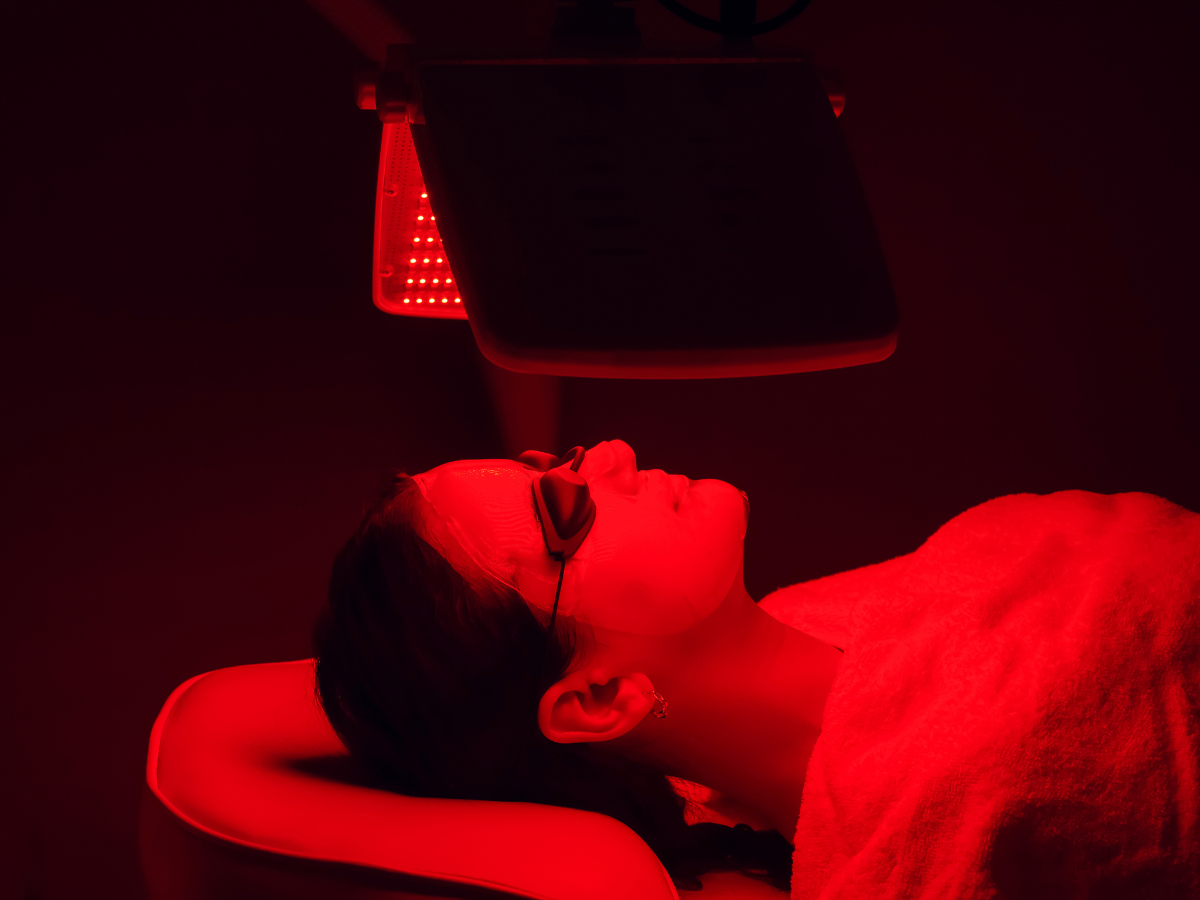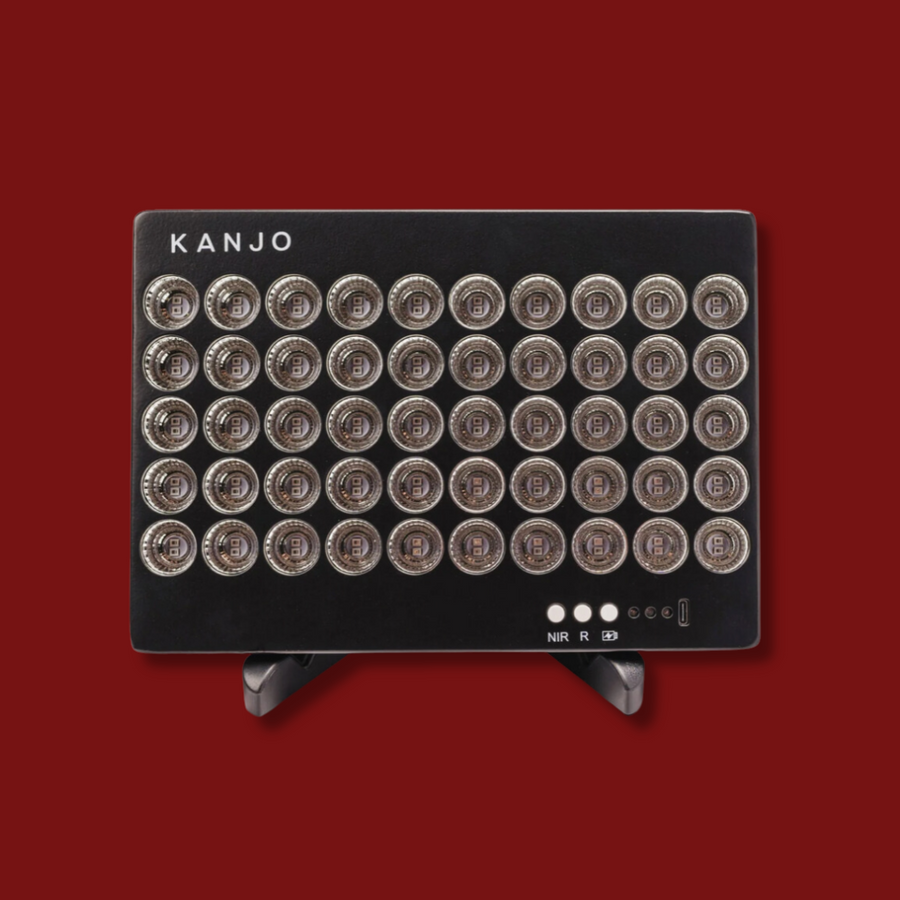
I've written extensively about Red Light Therapy and Its unmatched benefits for our skin, body, health and hair. I continue to get requests for a a quick guide that covers best practices, and answer the most asked questions. This is it! For more details on how to select the best device for your budget, before and after pictures, and product recommendations, please visit this blog.
What is Red Light Therapy?
Red light therapy is a popular and effective treatment for a variety of conditions. It works by exposing the body to low levels of red or near-infrared light, which can penetrate the skin and promote cellular regeneration.
What is Red Light Therapy Good For?
The benefits of red light therapy are numerous. It can improve wound healing, reduce stretch marks, wrinkles, and age spots, improve facial texture, improve psoriasis, rosacea, and eczema, improve scars, improve sun-damaged skin, and improve hair growth in people with androgenic alopecia. Red light therapy has also been shown to have anti-inflammatory properties and can aid in bone recovery.
So, how does red light therapy work?
The therapy works by exposing the body to low levels of red or near-infrared light. This light penetrates the skin and stimulates cellular regeneration, leading to improved skin texture, reduced inflammation, and improved healing. Red light therapy is non-invasive and does not produce any heat or discomfort, making it a safe and effective treatment option for a variety of conditions.
How To Use red Light Therapy
To properly administer red light therapy, it is important to choose the right device and use it according to the manufacturer's instructions. There are a variety of devices available, including handheld devices and light therapy masks. It is important to use the device for the recommended duration and frequency to achieve the best results.
Does Red Light Therapy Actually work?
Red light therapy has been extensively studied for its effectiveness in treating a variety of conditions, and the results have been promising. Research has shown that red light therapy can improve wound healing, reduce inflammation, improve skin texture, and reduce the appearance of wrinkles, fine lines, and age spots [1].
Red light therapy has also been shown to be effective in treating acne and other skin conditions, as well as reducing pain and promoting hair growth [2]. In addition, red light therapy has been used to treat conditions such as psoriasis, rosacea, and eczema, with positive results [1].
While the research on red light therapy is still ongoing, the evidence so far suggests that it can be an effective treatment for a variety of conditions.
What is Red Light Therapy Pros and Cons?
Red light therapy has been a topic of interest in recent years due to its potential benefits for various conditions. Here are some of the pros and cons of red light therapy:
Pros:
- Skin rejuvenation: Red light therapy has been shown to improve skin texture, reduce wrinkles, and minimize age spots and other signs of aging [3][4][5].
- Pain relief: Red light therapy can help reduce pain and inflammation, making it a potential treatment for conditions such as arthritis and chronic pain [3][6].
- Wound healing: Red light therapy has been shown to speed up the healing of wounds and injuries [3][7].
- Acne treatment: Red light therapy can help reduce inflammation and redness associated with acne, making it a potential treatment for this condition [3][8].
- Hair growth: Red light therapy has been shown to promote hair growth in people with androgenic alopecia [3][9].
Cons:
- Eye damage: Exposure to high levels of red light can potentially damage the eyes, so it is important to take precautions such as wearing protective eyewear during red light therapy treatments [3][10].
- Skin irritation: Some people may experience skin irritation or other side effects from red light therapy [3][11].
- Limited research: While there is promising research on the effectiveness of red light therapy, more studies are needed to fully understand its potential benefits and drawbacks [3][12].
- Cost: Red light therapy treatments can be expensive, especially if multiple sessions are needed. That's why, if considering RTL, it's best to invest in your own device to minimize cost.
Reduce acne and post-breakout inflammation with the Solawave Bye Acne, an FDA-cleared, award-winning, 3-minute Light Therapy treatment. Bye Acne uses the power of Red Light Therapy and Blue Light Therapy to target and treat pimples and breakouts for long-term results. Bye Acne is portable, pain-free, and non-invasive. Studies suggest most users see results after 2-3 uses.
USE CODE: BEAUTYDOCTRINE FOR 15% OFF
The Exesas Innovative Dual-Chip Red Light Therapy Device for Full Body is a multifunctional tool designed to enhance overall wellness. This device aids in achieving beautiful skin, improving performance, better sleep quality, easing aches, enhancing mental acuity, and managing stress and relaxation. Its versatility allows you to use it while working out, watching TV, studying, relaxing, or lying down. With the option to activate RED and IR lights separately or together, you can customize your therapy sessions to suit your needs.
Mat. Packed with targeted wavelengths, it penetrates deeply to soothe aches and promote natural healing. Rediscover well-being joyfully and bid discomfort farewell for a revitalized, pain-free lifestyle.
How long does it take for red light therapy to work?
There is no one-size-fits-all answer to how long it takes for red light therapy to work as it depends on several factors, including the condition being treated, the frequency and duration of the treatments, and the individual's overall health and lifestyle. It personally took me 2 months to see notable results with neck tightening. You can check out the before and after pictures here.
Some people may start to see improvements in their condition after just a few sessions of red light therapy, while others may require more frequent and longer treatments before seeing any benefits. It's important to note that red light therapy is a non-invasive, gentle treatment and is not a quick fix. It may take several weeks or months of consistent use to see significant results.
Can you overdo red light therapy?
While red light therapy is generally safe and well-tolerated, it is possible to overdo it in some cases. The recommended duration and frequency of red light therapy sessions vary depending on the specific condition being treated and the type of device being used. It's important to follow the manufacturer's instructions and consult with a healthcare professional before starting red light therapy to determine the appropriate treatment plan for your individual needs.
Prolonged exposure to high-intensity light, including red light, can cause skin damage and increase the risk of developing skin cancer. It's also important to avoid looking directly at the light source to prevent damage to the eyes. Overuse of red light therapy may also cause skin irritation, dryness, and rashes.
What are the Best Practices to Safely Use red Light Therapy, and When to use it?
Here are some best practices to help you use Red Light Therapy safely:
- Use goggles to protect your eyes.
- Use red light therapy in the morning for best results. This helps strengthen your skin defenses against sun damage
- Apply to clean skin to allow for maximum penetration of light into your cells. This minimizes interactions with skincare ingredients.
- Avoid exfoliating before using red light therapy, as this can make the skin more sensitive to light.
- Most AHA's and BHA's can increase the skin's sensitivity to light, so it's best to avoid using them before using red light therapy.
What Skincare Should I Use with Red Light Therapy?
After red light therapy, it is important to use clean skincare that is free of known toxins and irritants. This is because the skin is highly receptive after light therapy, and any ingredients present can be easily absorbed into the skin. The best options for clean skincare can be found on thebeautydoctrine.com. If using red light therapy for anti-aging and wrinkle reversal purposes, it is recommended to follow the treatment with one of these serums:
-
Agent Nateur Holi (Lift) Ageless Lifting and Firming Serum: This serum contains plant-based ingredients that help to lift and firm the skin, reduce fine lines and wrinkles, and improve overall skin texture.
-
Barrier Repair Serum with Vitamins A, C, and E: This serum contains vitamins A, C, and E, and Fatty Acids, which work together to hydrate, protect, and nourish the skin. Rosehip oil is known as Nature's Retinol. So this will help increase skin formless and cellular turnover without the interactions and side effects you can get from the use of conventional retinoids and retinols.
-
Versine Gentle Actives Clarity Serum: a multi-tasking, doctor-vetted serum formulated to address common skin concerns such as hyper-pigmentation, fine lines, and dry, fatigued skin. This potent serum is designed to deliver a brighter, healthier, and more hydrated complexion, making it a go-to solution for achieving a radiant glow.

By following red light therapy with one of these serums, the benefits of the treatment can be maximized, resulting in smoother, firmer, and more youthful-looking skin.
How do I know if my light therapy is working?
If you're wondering whether your light therapy is working, there are a few signs you can look for:
-
Improvement in symptoms: If you're using light therapy to treat a specific condition, such as acne or seasonal affective disorder (SAD), you should start to notice an improvement in your symptoms after a few sessions. Keep track of any changes in your condition to help you determine if the treatment is working.
-
Mood changes: Light therapy can help regulate your body's natural circadian rhythm, which can have a positive effect on your mood. If you're using light therapy to treat SAD or other mood disorders, you may notice an improvement in your overall mood and energy levels.
-
Better sleep: Light therapy can also help regulate your sleep-wake cycle, so if you're using it to improve your sleep, you should start to notice that you're falling asleep more easily and waking up feeling more rested.
-
Consistency: To see the full benefits of light therapy, it's important to use it consistently over time. Most people see the best results when using light therapy daily, so make sure you're sticking to a regular schedule.
Remember, everyone's response to light therapy is different, so it's important to be patient and give it time to work. If you need help with correctly using Red Light Therapy for your skin, or figuring out why you don't se results, book a consultation with a skincare expert.
Conclusion:
Red light therapy is a safe and effective treatment option for a variety of conditions. Its benefits include improved skin texture, reduced inflammation, and improved healing. To properly administer red light therapy, it is important to choose the right device and use it according to the manufacturer's instructions, or stick to 3 minutes a day for best results.
References:
-
"Red Light Therapy." Cleveland Clinic, Cleveland Clinic, 22 Mar. 2019, https://my.clevelandclinic.org/health/articles/22114-red-light-therapy.
-
"Red light therapy (RLT): Uses, benefits, and side effects." Medical News Today, MediLexicon International, 22 June 2021, https://www.medicalnewstoday.com/articles/325884.
- https://www.webmd.com/skin-problems-and-treatments/red-light-therapy
- https://www.healthline.com/health/red-light-therapy
- https://www.medicalnewstoday.com/articles/325884
- https://www.health.harvard.edu/staying-healthy/led-lights-are-they-a-cure-for-your-skin-woes-or-just-lots-of-hype
- https://pubmed.ncbi.nlm.nih.gov/29320386/
- https://pubmed.ncbi.nlm.nih.gov/24286286/
- https://www.sciencedirect.com/science/article/pii/S235264751730078X
- https://www.ncbi.nlm.nih.gov/pmc/articles/PMC3926176/
- https://www.ncbi.nlm.nih.gov/pmc/articles/PMC3926176/
- https://www.ncbi.nlm.nih.gov/pmc/articles/PMC4743666/








